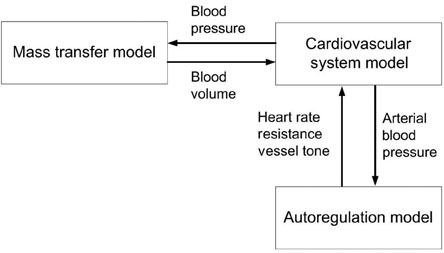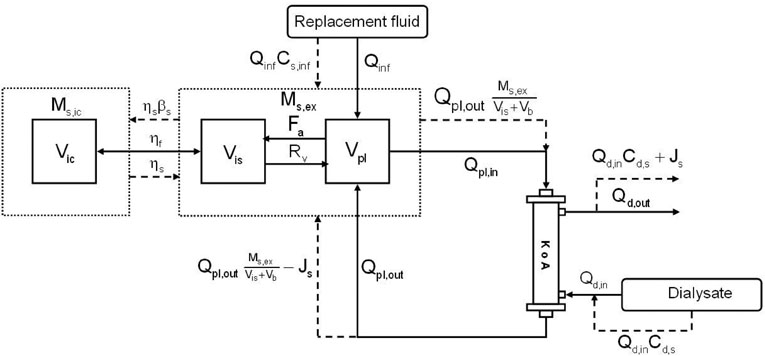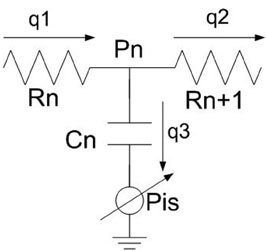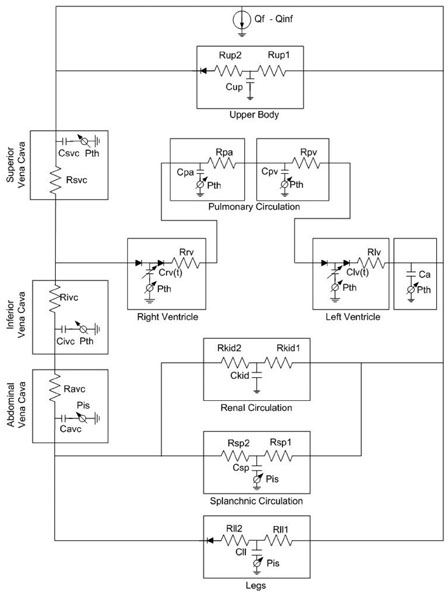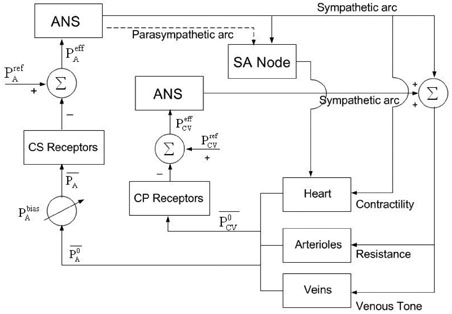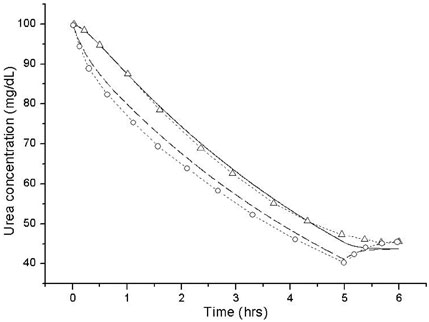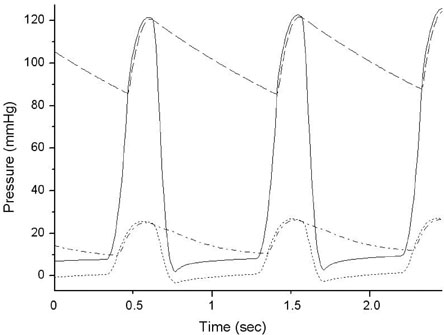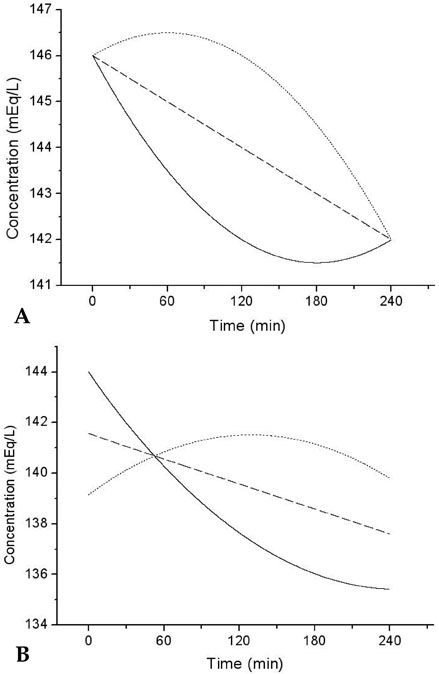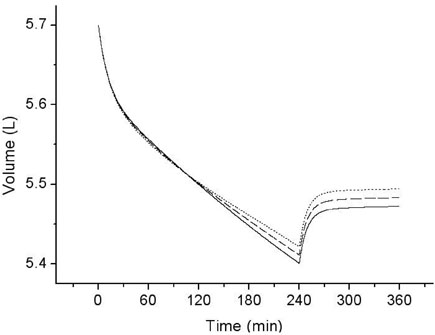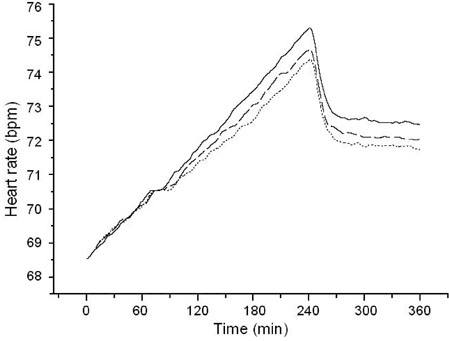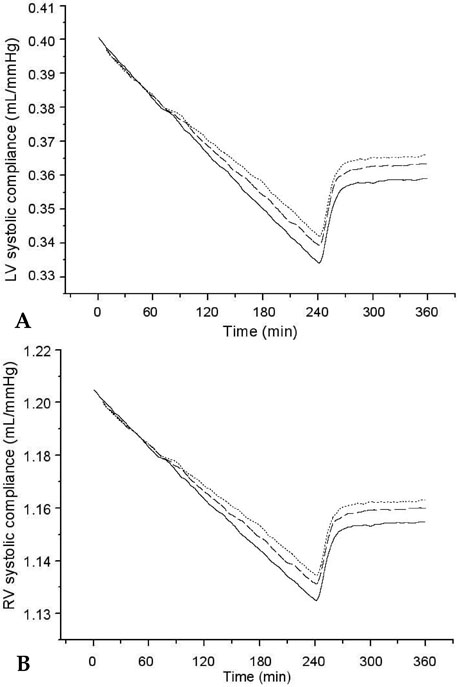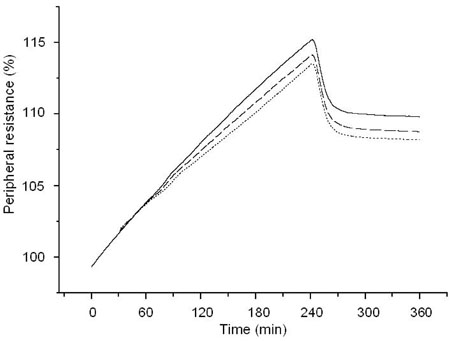Yonsei Med J.
2008 Aug;49(4):581-591. 10.3349/ymj.2008.49.4.581.
Numerical Simulation of the Effect of Sodium Profile on Cardiovascular Response to Hemodialysis
- Affiliations
-
- 1Department of Biomedical Engineering, College of Medicine, Seoul National University, Seoul, Korea. ebshim@kangwon.ac.kr
- 2Department of Mechanical and Biomedical Engineering, Kangwon National University, Chucheon, Kangwon-do, Korea.
- KMID: 1793193
- DOI: http://doi.org/10.3349/ymj.2008.49.4.581
Abstract
- PURPOSE
We developed a numerical model that predicts cardiovascular system response to hemodialysis, focusing on the effect of sodium profile during treatment. MATERIALS and METHODS: The model consists of a 2-compartment solute kinetics model, 3-compartment body fluid model, and 12-lumped-parameter representation of the cardiovascular circulation model connected to set-point models of the arterial baroreflexes. The solute kinetics model includes the dynamics of solutes in the intracellular and extracellular pools and a fluid balance model for the intracellular, interstitial, and plasma volumes. Perturbation due to hemodialysis treatment induces a pressure change in the blood vessels and the arterial baroreceptors then trigger control mechanisms (autoregulation system). These in turn alter heart rate, systemic arterial resistance, and cardiac contractility. The model parameters are based largely on the reported values. RESULTS: We present the results obtained by numerical simulations of cardiovascular response during hemodialysis with 3 different dialysate sodium concentration profiles. In each case, dialysate sodium concentration profile was first calculated using an inverse algorithm according to plasma sodium concentration profiles, and then the percentage changes in each compartment pressure, heart rate, and systolic ventricular compliance and systemic arterial resistance during hemodialysis were determined. A plasma concentration with an upward convex curve profile produced a cardiovascular response more stable than linear or downward convex curves. CONCLUSION: By conducting numerical tests of dialysis/cardivascular models for various treatment profiles and creating a database from the results, it should be possible to estimate an optimal sodium profile for each patient.
MeSH Terms
Figure
Reference
-
1. Kimura G, Van Stone JC, Bauer JH. Model prediction of plasma volume change induced by hemodialysis. J Lab Clin Med. 1984. 104:932–938.2. Ziolko M, Pietrzyk JA, Grabska-Chrzastowska J. Accuracy of hemodialysis modeling. Kidney Int. 2000. 77:1152–1163.3. Akcahuseyin E, Nette RW, Vincent HH, van Duyl WA, Krepel H, Weimar W, et al. Simulation study of the intercompartmental fluid shifts during hemodialysis. ASAIO J. 2000. 46:81–94.
Article4. Ursino M, Colí L, Brighenti C, Chiari L, de Pascalis A, Avanzolini G. Prediction of solute kinetics, acid-base status, and blood volume changes during profiled hemodialysis. Ann Biomed Eng. 2000. 28:204–216.5. Ursino M, Innocenti M. Modeling arterial hypotension during hemodialysis. Artif Organs. 1997. 21:873–890.
Article6. deBoer RW, Karemaker JM, Strackee J. Hemodynamic fluctuations and baroreflex sensitivity in humans: a beat-to-beat model. Am J Physiol. 1987. 253:H680–H689.
Article7. Heldt T, Shim EB, Kamm RD, Mark RG. Computational modeling of cardiovascular response to orthostatic stress. J Appl Physiol. 2002. 92:1239–1254.
Article8. Shim EB, Youn CH, Heldt T, Kamm RD, Mark RG. Computational modeling of the cardiovascular system after Fontan procedure. Lect Notes Comput Sci. 2002. 2526:105–114.9. Shim EB, Sah JY, Youn CH. Mathematical modeling of cardiovascular system dynamics using a lumped parameter method. Jpn J Physiol. 2004. 54:545–553.
Article10. Brouns R, De Deyn PP. Neurological complications in renal failure: a review. Clin Neurol Neurosurg. 2004. 107:1–16.11. Ursino M, Colí L, Dalmastri V, Volpe F, La Manna G, Avanzolini G, et al. An algorithm for the rational choice of sodium profile during hemodialysis. Int J Artif Organs. 1997. 20:659–672.
Article12. Barth RH. Jacobs C, Kjellstrand CM, Koch KM, Winchester JM, editors. Pros and cons of short, high efficiency, and high-flux dialysis. Replacement of renal function by dialysis. 1996. 4th ed. Dordrecht: Kluwer Academic Publishers;418–454.
- Full Text Links
- Actions
-
Cited
- CITED
-
- Close
- Share
- Similar articles
-
- Sodium Balance in Maintenance Hemodialysis
- Dialysis Unphysiology and Sodium Balance
- High Sodium Intake: Review of Recent Issues on Its Association with Cardiovascular Events and Measurement Methods
- Effect of Sodium Chloride on Biology of Catenaria anguillulae
- A Case of Severe Acute Renal Failure Due to Sodium Bromate Intoxication

